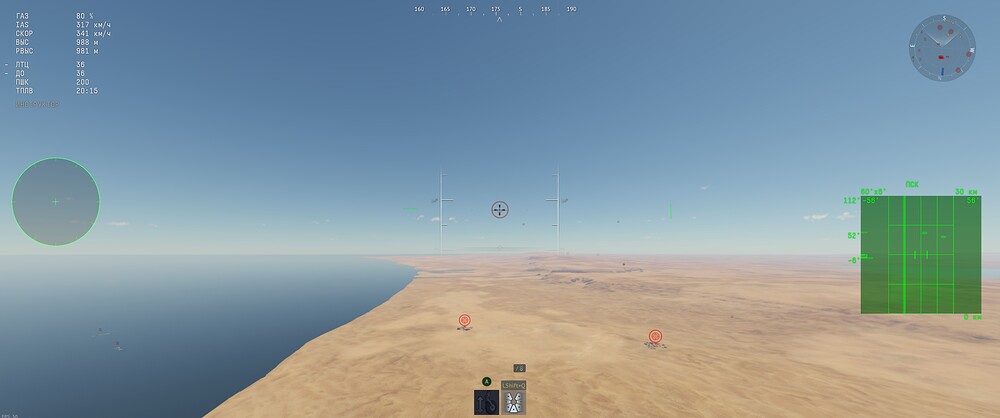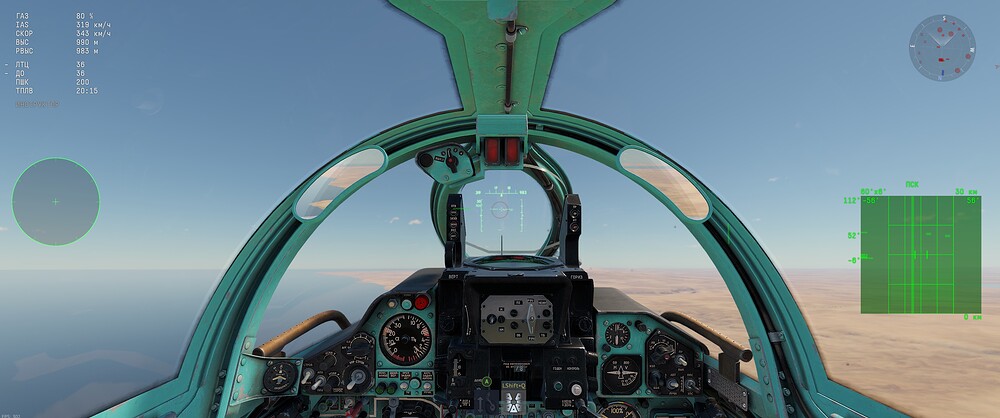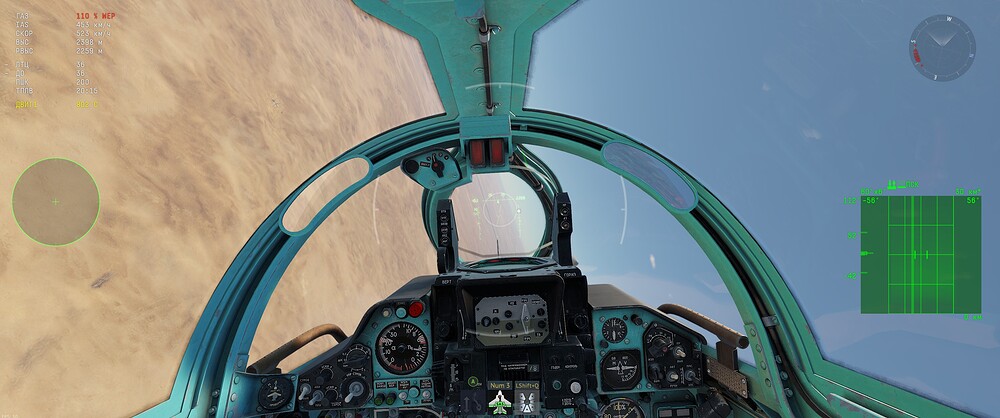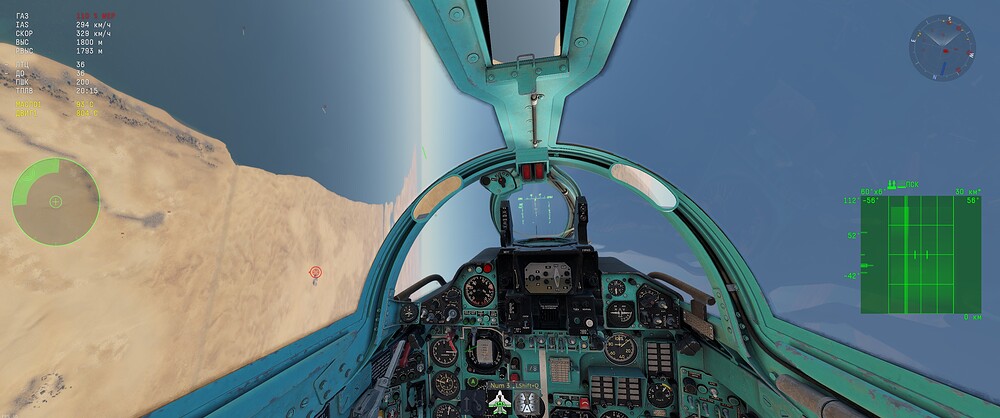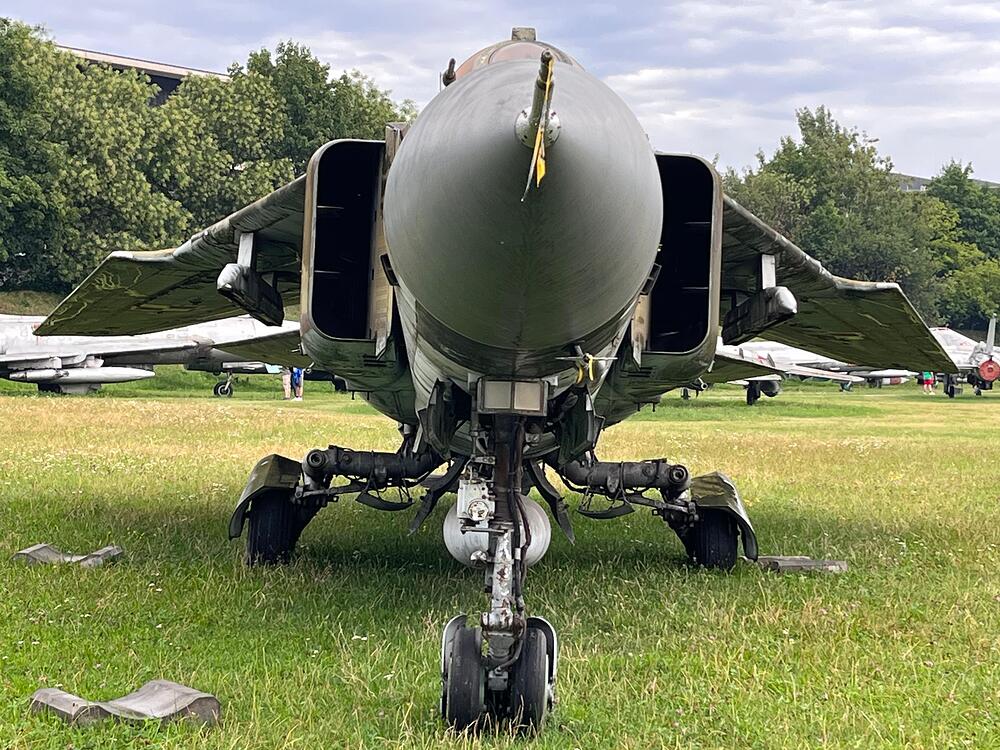This is also irrelavent
no it isnt because this is the Mig-23 thread and not the F-14 one
You brought up the f14A
as an example
to show that the Spo-10 didnt recieve special treatment
and ? it was done for balance reasons as mig 23 was getting domed by AIM-54 it couldnt detect and they should do that for mig 23 J band as its op to fire a R24R that no can detect 5-6 miles away on the best 11.7
Once the big live server bugs are all taken care of I should forward some of those since they seem to have been forgotten/lost in the sauce. Most of these would be easy fixes so it kind of sucks that they arent fixed yet
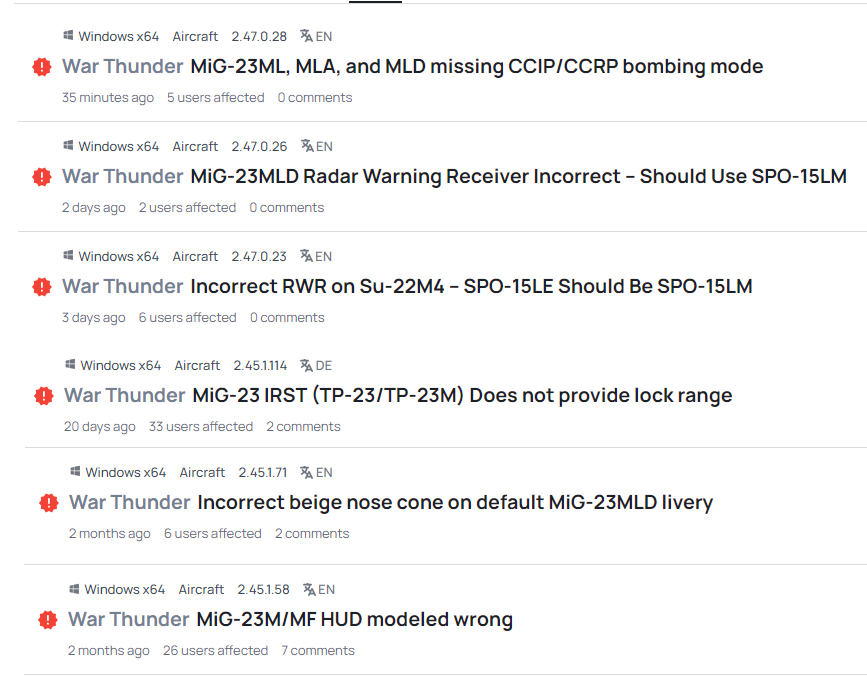
a bug report on the bugged IRST UI not specific to the Mig-23 but also affecting it
https://community.gaijin.net/issues/p/warthunder/i/wSjs2PWk3WOW
It looks like the MiG-23 greatly overperforms in terms of alpha capability. The FM is modelled around the known instrumental alpha numbers written in the flight manuals, however it doesn’t take into account that instrumental alpha isn’t close to the true one due to AoA sensor being influenced by local air flow.
A true alpha can be counted with the help of this formula

That comes is from the 23ML flight manual.
Here are 2 in-game screenshots, one from the in a virtual cockpit shows the real AoA , on the other one you can see the AoA gauge.
The screenshots were taken at the same-ish time, so the difference between the AoA should be minimal
Now, according to the lift vector ball, we can see that the AoA is around 7-8 degrees. And indeed it is, the cockpit shows the same number. But, as it was mentioned earlier, the AoA gauge should show the local AoA, so, if we use the formula we’ll see that it should show 2x7 - 5.5 = 8,5 (or 2x8-5.5 = 10,5) degrees.
With that in mind we’re slowly getting to the problem of the AoA overperformance.
Here I used my joystick in a free flight to max-out the performance with dampening on.
As you can see, the AoA shows 24 degrees which would be reasonable… If that was the local AoA number. Using the formula we’ll get 2x24 - 5,5 = 42,5 degrees of local AoA while the aircraft is limited to 24-ish (IIRC) by its flight control system when the wings aren’t fully swept back
Now let’s count the real max AoA from the max allowed local one (24 degrees)
(24+5,5)/2 = 14,75 degrees. Let’s make it 15 for the sake of simplicity
So, in the game we have 24 degrees of AoA while the jet should be limited to 15-ish
==================================================================
BTW, some info just to think about. The aircraft stalls at around 30 degrees AoA (dampening off).
Same problem. 30 degrees of true AoA is supposed to be 54,5 of the gauge one.
that is not AoA
that is your elevation
you missunderstand how AoA works
Since I placed my lift vector onto the horizon line, that is both my AoA and my elevation
no neccessarily because AoA is the difference in the air hitting your plane and where your nose is pointing
and dosent have anything to do with your direction of travel neccessarily
just make it easier for yourself to get accurate values by using WTRTI
Flight Path Vector shows exactly where your aircraft is flying to. Guess what you can easily calculate if you place it onto the horizon line (since there is also indication of where your nose is pointed and angle gauges)? Right, AoA
Fair enough forgot that WT doesn’t simulate air movment
Slightly unrelated
The mig23 has a flight control system?
How does it work?
Is it similar in function to the Mig-29?
Yes, it has a rudimentary flight control system. MLD models are retrofit with the same FCS as the MiG-29.
Seems like it overperforms in turn overall - STR, for example also should be lower
The AoA and turn rate has been reported and Gaijin will not reduce it further, this has all been discussed before. There is nothing new to this conversation.
F-5 syndrome
It aligns much more closely with the manual than the fictional F-5, which outperforms its real world successor the F-20… and subsequently the F-20 in-game is also overperforming by an equal amount.

